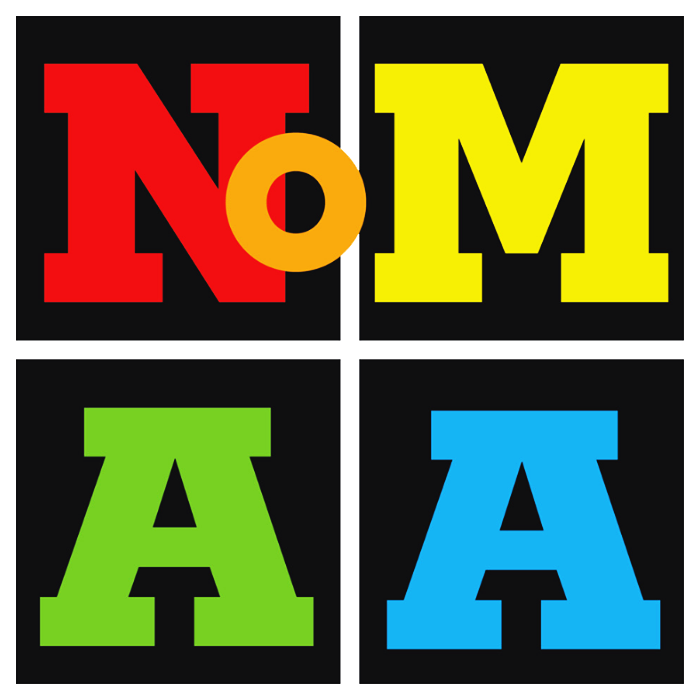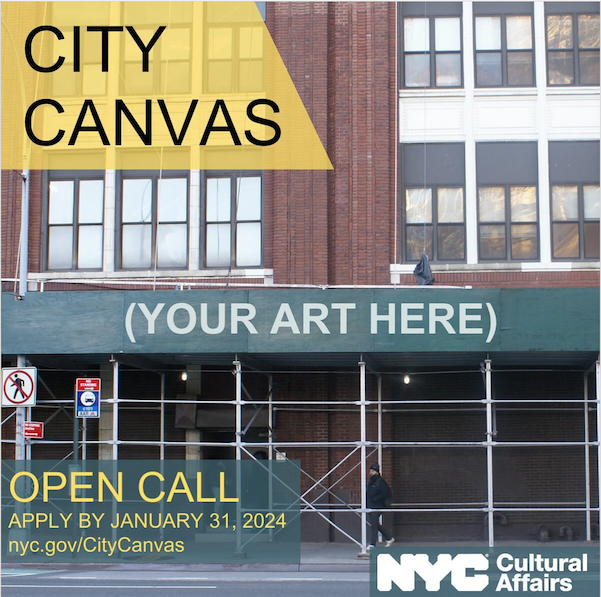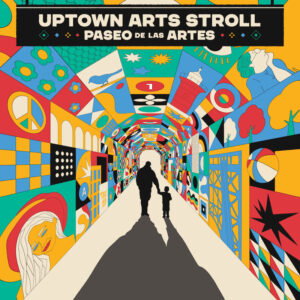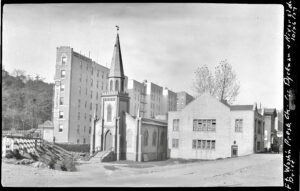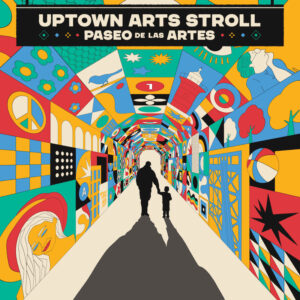NYC Department of Cultural Affairs
Application Deadline: January 31, 2024, 11:59pm
About City Canvas
There are more than 300 miles of construction fences and sidewalk sheds (often referred to as “scaffolding”) across New York City. While these temporary protective structures are a necessary part of the urban landscape, they are often unsightly and unappealing. NYC’s City Canvas program allows the installation of visual art on eligible temporary protective structures in an effort improve the City’s streetscape while transforming these structures into platforms for community engagement and creative expression.
The City Canvas program was initiated as a temporary pilot program in 2018 and made permanent by the adoption of Local Law 163 of 2021, which became effective on September 1, 2023. The law amended the New York City Charter and Building Code to permit the display of artwork on temporary protective structures (i.e., construction sheds, fences, and scaffolding) on construction sites. When filing an initial application permit for a temporary protective structure, property owners are automatically enrolled in the program and are offered an opt out option. Under the City Canvas program, there are two avenues for property owners to install artwork on temporary protective structures, Site-Specific Artwork and Pre-Approved Artwork.
Site-Specific Artwork is commissioned by a property owner independently or with the assistance of a partner organization that manages the production of artwork which must be approved by the DCLA prior to display. Pre-Approved Artwork is commissioned directly by DCLA to comply with all expected standards and which property owners may license for a fee to be negotiated with artists. DCLA will periodically conduct an open call to commission Pre-Approved Artworks that will be made available to be printed on weather resistant vinyl or debris netting to cover temporary protective structures. When a Pre-Approved Artwork is selected for display by a property owner, DCLA will put them in touch with the artist directly to adapt their artwork for the given site. This open call is for a Pre-Approved Art cycle which will culminate with the publication of a portfolio of pre-approved art in Spring 2024.
Submission and Selection Process
Phase One is a Request for Expression of Interest (RFEI) in which artists may respond with samples of past work. Artists do not submit a proposal as part of the RFEI. The City, in partnership with a committee of local arts professionals and community stakeholders, will select at least 10 artists to proceed to Phase Two.
During Phase Two, the City will work with the selected artists to develop their final artworks for which they will receive an honorarium of $1,000.
Phase Three is the minimum two-year period during which DCLA makes Pre-Approved Artwork from a cycle available online to interested property owners and artists. During this time, it is entirely up to the discretion of property owners and artists if they decide to work together on a site.
Artist Fees
Selected artists will each receive $1,000 during Phase Two to develop a final design that may be displayed on City owned buildings or licensed by other non-City property owners. Whenever an Approved Artwork is selected for display on a temporary protective structure by a non-City property owner the artist will contract directly with the property owner and negotiate a separate fee to adapt their artwork for a given site. The license fee is decided between the property owner and the artist independently, however DCLA offers a guide for determining what this fee could be.
Artwork Guidelines
Artwork must maintain integrity of proportions and color when scaled and printed; and Artwork must comply with the following criteria:
- No obscenity or hate speech;
- No sexual content;
- No advertisements, including commercially recognizable symbols or logos; and
- No depiction of illegal activity.
- Artwork must not violate Federal, State or local law or rule.
- Artwork must be consistent with the Zoning Resolution.
- Artwork must include a credit to the Artist.
- Artwork may not contain text, except for permitted credits and/or an information panel.
- Permitted credits may include credits to the artist, sponsor, and property owner.
Temporary Protective Structures
Sidewalk Sheds
The most common temporary protective structures are sidewalk sheds which are made of wood and must be a minimum of 5 feet wide and provide a minimum of 8 feet clearance. Artwork displayed on a sidewalk shed will be printed on vinyl that will be fastened to the outer sides and ends of sheds either by stretching it over the shed and fastening to the back or by affixing such material to self-adhesive panels that adhere directly to the shed.
Department of Buildings Sidewalk Shed Information Page
Construction Fences
Construction fences are at least 8 feet high and may be made of wood, corrugated metal, or chain link materials. Fences made of solid materials include 1 x 1 foot plexi-glass viewing panels every 25 feet and are installed between three and six feet above ground level. Artwork displayed on a construction fence will be printed on vinyl that will be fastened to the outer sides and ends of fence either by stretching it over the fence and fastening to the back or by affixing such material to self-adhesive panels that adhere directly to the surface. Chain link fencing may require the vinyl print to include grommets in order to secure the art using zip-ties.
Department of Buildings Construction Fence Information Page
Supported Scaffold
Scaffold is a temporary elevated platform, including its supporting structure, erected at a construction site to support workers and/or materials and providing aboveground access to the building’s exterior. A scaffold may also serve as a frame for installing safety netting. Artwork displayed on supportive scaffolds will be printed directly onto netting and secured using zip ties that loop directly through it.
Department of Buildings Supported Scaffold Information Page
Artist Agreement and Intellectual Property Rights
DCLA understands the importance of artists’ intellectual property rights. Prior to the start date of City Canvas cycle, the selected artists will be required to sign an agreement. The agreement includes fixed provisions regarding intellectual property and states that the artist(s) own and maintain intellectual property rights over their artistic work developed for City Canvas and grant the City a license to use and display such artistic works on City-owned buildings. The artist will sign an artwork submission agreement with DCLA that will include a license for City use of the preapproved artwork. Please note that a separate license will need to be negotiated with non-City building owner(s) when they select an artist’s Pre-Approved Art for display. Selected artists are strongly encouraged to review the Agreements with trusted legal counsel as soon as they are received to avoid delays.
The Call
Interested artists must submit all the following application materials using this online form:
- Statement of Interest (150 words max): Explain your interest in this project and describe what you feel the purpose of public art on temporary protective structures should be. What are some topics or questions that your proposal would address if you are selected to present one?
- Artist Statement (250 words max): Provide a statement pertaining to the submitted work samples.
- Work Samples: Provide up to 10 digital images of recent works.
- Work Sample List: Provide a list of submitted work, including title, date, materials and dimensions. Include 1-2 sentence descriptions as needed.
Selection Process and Evaluation Criteria
Artist responses will be reviewed by a panel of representatives from DCLA and invited professionals with expertise in contemporary art. The panel will review applications for completeness, eligibility, and quality, as well as:
- Clarity of statement of interest.
- Quality of the applicant’s prior work.
- Evidence of flexibility, adaptability, and ability to maneuver through different situations and populations.
Finalists will be asked to submit artwork during Phase Two of the selection process.
Applicant Eligibility
- Applications will be accepted from individual artists or artist collectives.
- Artists must be 18 years of age or older.
- Artists must have a tax identification number in order to be paid by the city.
Timeline
- Phase 1 Application Deadline: January 31, 2024, 11:59pm
- Artist Selection Period: Week of February 19, 2024
- Artist Notifications: End of February, 2024
- Phase 2 Proposal Deadline: End of April, 2024
- Artwork availability Start Date: Beginning of May, 2024
This open call does not represent any obligation or agreement whatsoever on the part of the City. If you have questions about the application process or residency structure, please contact us at citycanvas@culture.nyc.gov
Listing expiration: January 31, 2024.
